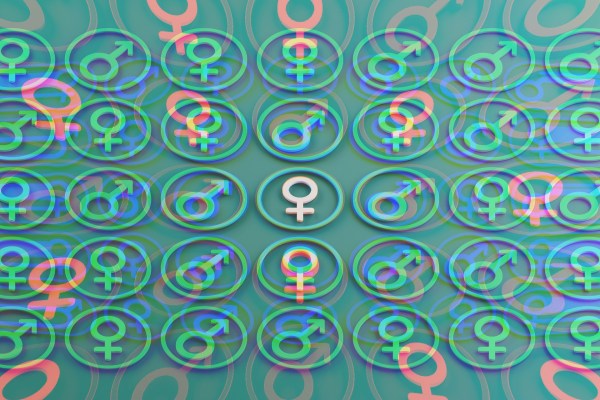Can you save the whales by ditching the kids? Some people seem to think so: Prince Harry and Meghan Markle pledged in 2019 to have no more than two children for the sake of the earth, and some groups actively ask people to pledge to have no children at all. “You can protect children while fighting climate change and systematic corruption by refusing to procreate!” reads the website of one such organization.
But in their new book, After the Spike: Population, Progress, and the Case for People, the economists Dean Spears and Michael Geruso take steady aim at the claim that fewer children would mean a better world.
In After the Spike, Geruso and Spears attempt to rebut anti-natal climate activists with a two-pronged argument. First, such activists are already living in the world they say they want, where birth rates are in freefall. Second, even a dramatic plunge in childbearing won’t change the climate over the time horizon that matters. When activists claim it is unethical to have children or to have “more than your share,” they are asking potential parents to make an enormous personal sacrifice for nothing.
The fertility collapse is a global phenomenon. Two-thirds of nations are below the replacement rate of 2.1 children per woman, and the countries that are currently above the replacement rate are on a downward slide, with no sign of stopping. The argument at the heart of After the Spike is that the world is nearing its peak population, somewhere around 2080. From that point forward, the world will grow smaller and sparser, unless and until people decide to have more children than they’re having now.
That sounds pretty close to the anti-natal environmentalist ask. But Spears and Geruso don’t believe that these environmentalists’ only error is refusing to recognize their victory: The authors also make a persuasive case that this is a pointless battle in the first place.
Global population, the authors argue, is like a massive ship. It has enormous inertia and any shift made now will take a long time to show up in the total numbers. As they explain, we are currently at a global population of 8.2 billion. If births ceased completely, next year’s population would be 8.1 billion people. The authors model the environmental impacts of various fertility decreases, using the highest estimates for the carbon impact of children, and always get the same answer: The number of children being born now won’t change the global population totals or global carbon emissions in time to matter for the Paris Agreement’s mid-century net-zero targets.
In fact, it’s technology growth, not population degrowth, that can make the short-term, high-impact changes to our climate in the critical window. As the authors point out, when Geruso’s son Emmet was born in 2013, his birth had no impact on environmental concerns like the shrinking ozone layer, environmental lead exposure, or acid rain. These threats were major focuses of prior waves of environmentalists, but addressing them didn’t require preventing births. Instead of outlawing or discouraging Emmets, we took the lead out of gas, banned chlorofluorocarbons, and limited sulfur dioxide emissions. We have less pollution without needing to have fewer people.
This is, or should be, good news. Solar and wind power are growing parts of our grid. Improved batteries allow these renewable energy sources to play a role in meeting electricity supply all day. Natural gas is displacing much dirtier coal. Nuclear power similarly displaces fuels which pose greater danger to the communities that supply it (when politics permit). We have many of the building blocks for a carbon-neutral future, and other pieces of the puzzle, like pulling carbon out of the air, seem plausibly on the horizon.
What is attractive about the degrowth, anti-natalist call? Sacrifice can sound more serious than innovation, whether or not the sacrifice is rightly applied. Indeed, anti-natal environmentalism resembles, at much larger scale, the anti-plastic-straw campaign. Both calls to sacrifice are associated with flawed or outdated data. Paul Ehrlich’s 1968 The Population Bomb still shapes policy discussions even though his doomsday predictions of famines were obviated by agricultural innovation. On a smaller scale, plastic straws were banned partly on the basis of a guesstimate made by a 9-year-old. It’s hard to correct these errors when criticism can be fended off with the accusation that people just want an excuse to not do their part.
Degrowth can be sticky due to this kind of epistemic moat, but a different feature of anti-natalism also likely makes it attractive. To argue against children for the climate’s sake requires making the claim that we are incapable of living well on the earth. In this perspective, humans are essentially a harm to mitigate. Humans are more like hurricanes—unstoppable patterns of devastation—than moral agents.
This worldview relieves adherents of the burden of making political choices and tradeoffs. For those who recognize that we are making progress against climate change, there are still many open questions: Should we allow experiments in geoengineering that could reduce warming by increasing cloud cover? Is it right to hold nuclear power to a massively higher safety standard than coal, treating existing harms as normal, but new (and low) risks as too dangerous to license? Is it worthwhile to sidestep prior environmental regulations if they make it impossible to add clean energy to our existing grid in a reasonable timeline? Thoughtfully answering any of these questions means accepting the existence of the tradeoffs.
Rejecting new energy projects, rejecting deliberate geoengineering to mitigate unwanted climate change, and rejecting children are all forms of rejecting human responsibility. The idea that the ideal human is one that has a smaller presence in the world is not limited to degrowth environmentalists. In an essay titled The Life Goals of Dead People, the writer Ozy Brennan offers a sharp critique of this philosophy in its varied forms, testing these philosophies of less by asking: “[Is] the best possible person to achieve [the good life] a corpse?”
Brennan lists some of the harm-minimization approaches anxious people might apply to their social life: “I don’t want to make anyone mad,” “I want to take up less space,” “I don’t want my body to have needs,” and “I don’t want to be a burden.” But all of these goals, Brennan points out, can be better met by a corpse than by a living, breathing human being: A living person can only approach these goals asymptotically, while the corpse achieves perfection.
“If you want to be dead, that’s your own business,” Brennan writes. “But if you would like to continue to be alive, it’s a bad idea to set goals for yourself that boil down to ‘try to get as close as possible to being a corpse while continuing to respire and consume nutrients.’”
Choosing children over corpses is embracing risk; having a child is choosing to be surprised by what might happen next. Public policy can (and should) cushion some of these risks for parents, but it will never make children a totally safe bet. Ultimately, reversing the demographic trends that concern Geruso and Spears will require embracing children as turbulent in a world that over-values predictability.
Spears and Geruso make a pitch for a world with many people as a way of achieving rare, powerful insights (mRNA vaccines, a beautiful work of art, etc), and they’re correct to focus on these worldwide benefits. But on the smaller scale, every parent knows that welcoming a child also means exposing yourself to risks: career setbacks, childhood illness, twentysomethings going “no contact,” etc. Indeed, a larger, livelier world brings with it the risk of sharp, personal griefs. The only way to be prepared is by recognizing that children, like humans of any age, are not a harm to be minimized. Humans are a positive good, both in the aggregate and individually. Each person is a world entire.










Please note that we at The Dispatch hold ourselves, our work, and our commenters to a higher standard than other places on the internet. We welcome comments that foster genuine debate or discussion—including comments critical of us or our work—but responses that include ad hominem attacks on fellow Dispatch members or are intended to stoke fear and anger may be moderated.
With your membership, you only have the ability to comment on The Morning Dispatch articles. Consider upgrading to join the conversation everywhere.